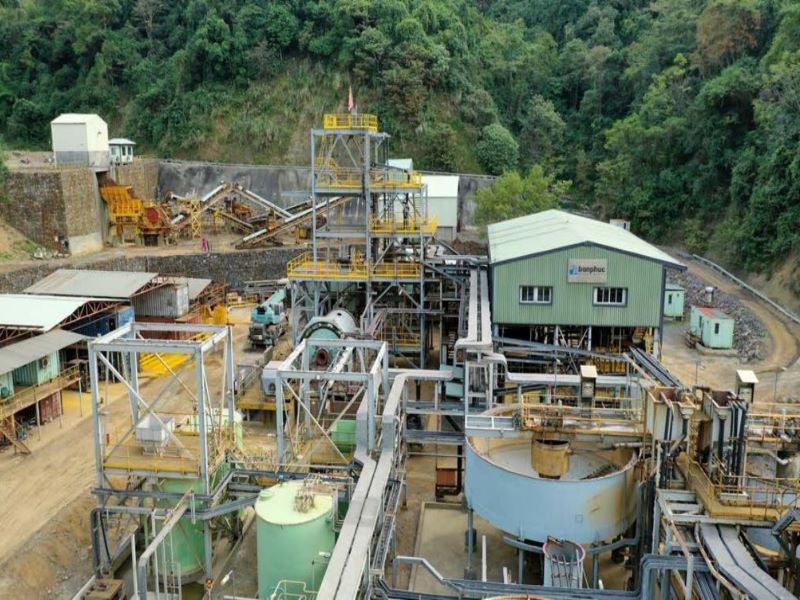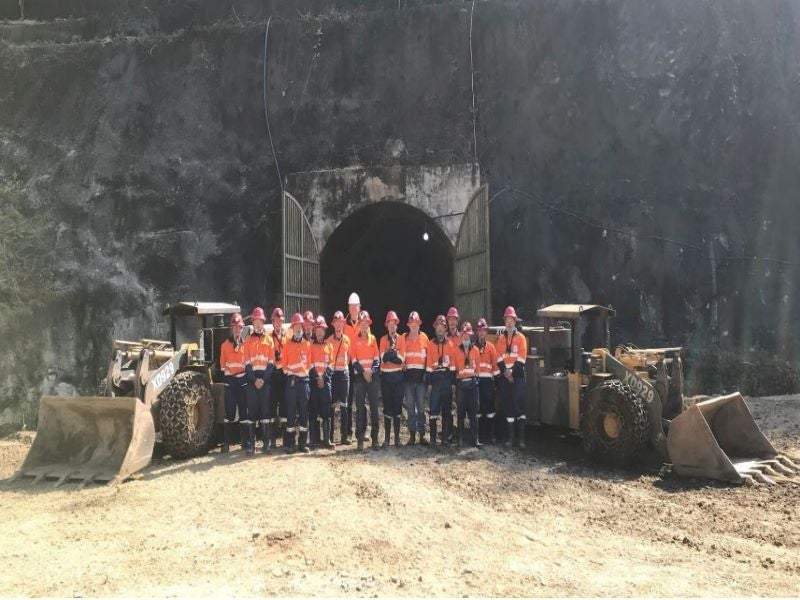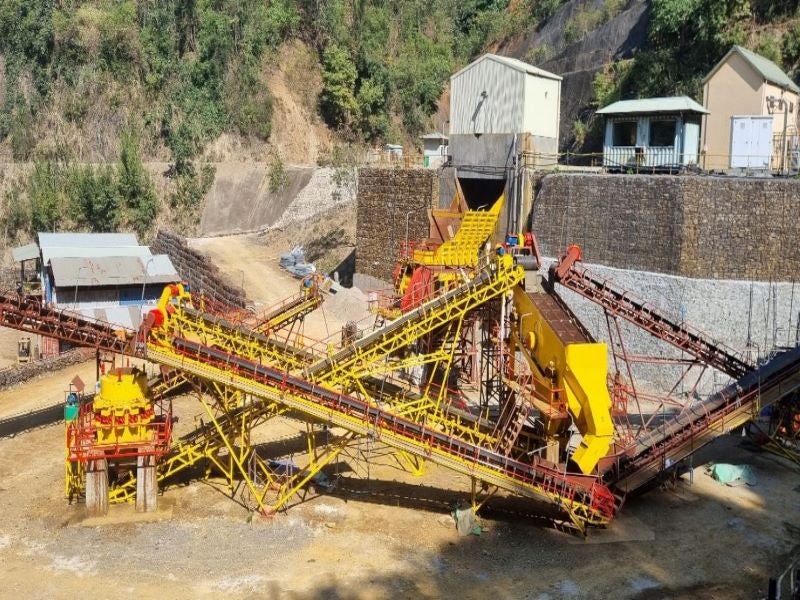The Ta Khoa nickel project is proposed to be developed in northern Vietnam by Blackstone Minerals (BSX), through its subsidiary Ban Phuc Nickel Mines (BPNM). BSX holds a 90% interest in BPNM, which owns the project tenure.
A pre-feasibility study (PFS) for the Ta Khoa nickel project was completed in February 2022, with a focus on the Ban Phuc, Ban Chang, and King Snake deposits. The undeveloped Ban Phuc disseminated sulphide (DSS) resource, next to the existing Ban Phuc underground mine, is the main focus of the PFS.
The project involves open-pit and underground operations, and is estimated to involve a pre-production investment of $854m while the life of mine (LOM) is expected to be ten years.
A separate PFS for the Ta Khoa Refinery (TKR), to process 400,000 tonnes per annum (tpa) of nickel concentrate feed, was completed in July 2021.
A definitive feasibility study (DFS) will be undertaken in 2022 and is expected to be completed by the first half (H1) of 2023. Early plant site works are expected to start in the third quarter (Q3) of 2023 while commissioning is expected by mid-2025.
Ta Khoa project location and geology
The Ta Khoa nickel project will be developed in the Bac Yen district, within the Son La province, approximately 160km west of Hanoi, the capital of Vietnam. The concession covers an area of 150km² and includes the Ban Phuc nickel mine.
Ta Khoa is situated in a magmatic nickel-copper-platinum-group elements (PGE) sulphide district, associated with the Song Da rift zone, and the Emeishan large igneous province.
Calcareous schists and marbles of the Ban Phuc beds form the wall-rock host of the Ban Phuc and Ban Khoa DSS deposits, and the Ban Chang and King Snake massive sulphide vein (MSV) deposits.
Ta Khoa reserves
Ban Phuc DSS reported an indicated mineral resource of 102 million tonnes (Mt) grading 0.38% nickel, and an inferred resource of 21Mt grading 0.33% nickel, as of December 2021. The combined inferred mineral resource at the Ban Chang and King Snake deposits is estimated at 1.1Mt grading 1.22% nickel.
The proven and probable mineral reserves at Ban Phuc are estimated at 48.7Mt grading 0.43% nickel.
The Ban Khoa DSS deposit, which is in a preliminary development phase, was not considered for the PFS. It is one of the additional prospects within the immediate Ban Phuc area and is expected to be included in the DFS.
Mining operations at Ta Khoa
The Ban Phuc deposit is proposed to be exploited using conventional open-pit mining methods. The mine plan proposes a peak production rate of 35 million tonnes per annum (Mtpa).
Hydraulic excavators in backhoe configuration, along with hydraulic drills and battery electric rigid body trucks, are planned to be used for the operation.
The final pit design features top and bottom pit elevations of 1,560m and 1,090m, respectively, while the total depth will be 470m.
The King Snake and Ban Chang deposits are proposed to be developed using long-hole underground mining methods. Access to the underground deposits will be via decline portals, which will have a maximum grade of 15%. Ore and waste haulage from the underground operations will be conducted through a ramp.
The underground mine plan for the Ban Chang East and West developments will feature a two-portal design, that facilitates bottom-up development, while eliminating the need for vertical development.
King Snake will also feature a two-portal design that is similar to the Ban Chang design for the initial three levels. It will switch to a top-down ramp development after the completion of the first three levels.
Initial underground mining will commence at the King Snake and Ban Chang East deposits simultaneously, while Ban Chang West will be brought to production following the exhaustion of the two operations. All three deposits will be mined using longitudinal long-hole retreat, with levels 20m apart, and a 4m sill pillar will be used every third level.
Processing at the Ta Khoa nickel project
The processing plant for the Ta Khoa nickel project is designed to have a processing capacity of 8Mtpa, with an average annual nickel concentrate recovery of 16,400t.
The run of mine (ROM) ore will be crushed in a primary crusher that is designed to operate for 75% of the time during the year. The crushed ore will be ground in a semi-autogenous grinding (SAG) mill, followed by two ball mills, and a cyclone cluster.
The cyclone cluster overflow will feed the flotation circuit, comprising direct flotation reactor (DFR) type cells. The concentrate product from the rougher cells will be pumped to the primary cleaner cells while concentrate from the scavenger cells will be circulated to the regrind circuit.
Concentrate from the primary cleaner cells will be fed to the concentrate thickener while tailings from the cleaner cells, and concentrate from the scavenger cells, will be pumped to the regrind mill circuit. The process design includes six primary cleaner cells.
The product from the regrind mill circuit will be sent to the secondary cleaner cells while concentrate from the secondary cleaner cells will feed the primary cleaner cells.
The final concentrate product from the cleaner cells will be thickened in a concentrate thickener to increase the solids content from 16% to approximately 60%. The concentrate thickener underflow will be transferred to two concentrate filters. The final product from the concentrate filter will have approximately 17% moisture by mass.
Ta Khoa infrastructure details
The Ta Khoa nickel project includes an existing 450,000tpa sulphide refinery.
Power supply to the site will be via a 110kV line that will tie-in to the 110kV line, between the 220kV Son La high-voltage (HV) substation, and Xuan Thien Hydro Power’s Hang Dong hydropower project’s line. A new HV step-down substation will be constructed on the project site.
A raw water supply will be sourced from mine open-pit de-watering while potable water will be produced using a water treatment plant, which will be fed by river water.
Contractors involved
ALS Metallurgy was responsible for the metallurgical test-work and mineralogy while Benchmark Mineral Intelligence provided market analysis for nickel and cobalt. The financial model for the project was reviewed by BurnVoir, a financial advisory based in Australia.
BlueVein, a dynamic charging services provider, was engaged in the design, operational modelling, and capital cost estimate for dynamic charging infrastructure.
The mineral resource estimation was provided by Optiro, an Australian mining consultant.
PSM Consulting was engaged to provide the geotechnical design and recommendations for the mine and plant site, as well as hydrogeological interpretation.
CPC Engineering was responsible for the process design, plant engineering, process operating cost estimates, and associated capital cost estimates.
Golder Associates, a consulting, design, and construction services company, conducted studies related to geochemistry, integrated waste landform design, and cost estimation. Metso-Outotec provided tailings and concentrate thickening, and filtration test-work.
Optimise Group was engaged for mining design, including pit optimisation, cost estimation, scheduling, as well as mining and off-site infrastructure design.
Project background
BPNM was established in 1993 by Asian Minerals Resources (AMR), through its subsidiary, AMR Nickel (AMRN), in partnership with Vietnamese companies, Mineral Development Company (MIDECO), and Mechanical Engineering Company of Son La Province (COXAMA).
A 17-acre area, which was granted to BPNM in 2007, includes the mining licence for MSV sulphides. The first phase of mining operations started in 2008. The Ban Phuc operations were later suspended, owing to a decline in nickel prices due to the global financial crisis.
Full-scale production at the mine commenced in 2013. Ban Phuc was placed under care and maintenance in the fourth quarter (Q4) of 2016, in the face of challenges such as low nickel prices and the depletion of the ore reserves.
Mining activities at the Ta Khoa project resumed in December 2021, after BSX received approval to perform mining works to complete approximately 1,000m of lateral development. The nickel concentrate produced from the existing concentrator is planned to be used for the pilot programme for the new refinery at Ta Khoa.






